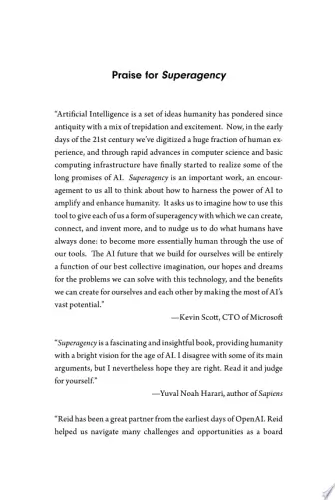Clean Code
A Handbook of Agile Software Craftsmanship
What's it about?
Clean Code is a must-read for any developer looking to improve their coding skills. Martin provides valuable insights on writing clean, maintainable code that is easy to understand and modify. With practical examples and guidelines, this book teaches you how to write code that is efficient, readable, and scalable. Whether you're a beginner or an experienced programmer, Clean Code will help you elevate your coding practices to the next level.
About the Author
Robert C. Martin, also known as "Uncle Bob," is a software engineer and author influential in the Agile and software craftsmanship movements. He authored seminal works like "Clean Code" and "The Clean Coder," advocating for best practices in software development, including TDD, OOP, and system architecture.
10 Key Ideas of Clean Code
Use Meaningful and Intuitive Names for Variables and Functions
Choosing clear, meaningful names for variables and functions makes the code more understandable and maintainable.
It helps others (and your future self) to quickly grasp the purpose of a variable or what a function does without needing to decipher the code itself.
Avoid generic names like 'data' or 'info' and instead opt for descriptive names that convey the variable's or function's role within the application.
Learn DeeperChoose Names that Reflect the Purpose: When naming a variable or function, think about what it does or what data it holds. For example, if a variable holds the number of users registered on a website, instead of naming it 'num' or 'data', name it 'registeredUsersCount'. This immediately tells anyone reading the code what that variable represents.
Avoid Technical Jargon Unless Necessary: While it's important to use terminology that is precise, avoid overly technical terms that could confuse someone unfamiliar with the specific technology or methodology unless such specificity is required for clarity. Instead of 'instantiationCounter', you could use 'objectCreationCount' if it makes the purpose clearer to a broader audience.
Use Verbs for Functions and Nouns for Variables: Functions often perform actions, so their names should reflect this by using verbs, e.g., 'calculateTotal' or 'fetchUserData'. Variables, on the other hand, hold data and should be named with nouns that describe the data they hold, like 'userProfile' or 'paymentAmount'.
Be Consistent with Naming Conventions: Once you decide on a naming style, stick with it throughout your project. Consistency makes your code easier to read and understand. If you start naming variables with camelCase, continue to do so. If your functions are verbs followed by nouns, keep that format consistent.
- Example
Bad Variable Name: 'd' for a variable that holds the distance between two points. Better Name: 'distanceBetweenPoints'. The improved name clearly describes what the variable represents without needing additional context.
- Example
Bad Function Name: 'process()' for a function that calculates the total price of items in a shopping cart. Better Name: 'calculateTotalPrice()'. This name makes it clear what the function does, reducing the need for comments or diving into the function's implementation to understand its purpose.
Keep Functions Small and Focused on a Single Task
Functions should be concise and perform a single operation.
This makes them easier to read, understand, and test.
A good rule of thumb is that if you can't summarize what a function does in a simple sentence, it's probably doing too much.
Refactoring large functions into smaller, more focused ones can improve code clarity and reusability.
Learn DeeperBreak Down Complex Functions: Start by identifying the different tasks your function is performing. If it's doing more than one thing, consider breaking it into smaller functions, each handling a specific task.
Name Functions Clearly: Give your functions names that clearly describe their purpose. This makes it easier to understand what the function does at a glance, aiding in readability and maintainability.
Limit Function Parameters: Aim to keep the number of parameters for your functions to a minimum. Too many parameters can make functions complicated and harder to use. If you find yourself needing many parameters, it might be a sign that your function is doing too much.
Refactor Regularly: Make it a habit to review and refactor your code regularly. Look for opportunities to simplify functions and improve code clarity. This ongoing process helps keep your codebase clean and efficient.
Write Unit Tests: Writing tests for your functions can help ensure they do exactly what they're supposed to do. It also makes refactoring less risky, as you'll quickly know if changes break existing functionality.
- Example
If you have a function called
processUserDatathat validates user input, queries the database, and sends a confirmation email, consider breaking it into three functions:validateUserInput,queryDatabaseForUser, andsendConfirmationEmail. Each function now has a clear, singular purpose. - Example
Imagine a function
createReportthat takes in data, formats it, performs calculations, and then generates a PDF report. Split this into smaller functions likeformatData,performCalculations, andgeneratePDFReport. This not only makes your code cleaner but also allows for reusing these functions in other parts of your application.
Write Clean Comments That Add Value
Comments should be used judiciously to explain why something is done a certain way, not what is being done.
The code itself should be clear enough to describe the 'what' and 'how'.
Avoid redundant comments and ensure that any comment added provides value and insight that isn't already obvious from the code.
Learn DeeperReview Your Comments Before Committing Code: After writing your comments, take a moment to review them. Ask yourself if they truly add value or if they're simply reiterating what the code already shows. This step ensures that your comments are necessary and beneficial.
Explain 'Why', Not 'What': When you feel the need to write a comment, focus on explaining why you made certain coding decisions instead of what the code is doing. This approach helps future readers understand the rationale behind your choices, which can be invaluable when the code needs to be modified or debuged.
Keep Comments Up-to-Date: As you update your code, make sure to revisit and revise your comments as well. Outdated comments can be more misleading than no comments at all. This habit ensures that your comments remain relevant and helpful over time.
Use Comments to Warn of Consequences: If a particular piece of code has a non-obvious consequence or requires a specific context to understand, use comments to highlight these aspects. This can prevent future errors and misunderstandings by other developers.
- Example
Instead of commenting a complex piece of code with // Loops through array to find a match, use something like // Using binary search due to performance benefits and the sorted nature of the array. This explains why a binary search is chosen over a simpler loop.
- Example
If you're writing a workaround for a bug in a third-party library, instead of a vague comment, detail it: // Workaround for XYZ library bug (link to bug report) that causes a memory leak under condition ABC. This not only explains the 'why' but also provides a reference for future investigation.
Utilize Consistent Formatting and Conventions
Consistency in coding style, such as indentation, naming conventions, and file structure, makes the codebase easier to navigate and understand.
Adopting a common set of formatting rules and conventions can significantly reduce cognitive load, making it easier for developers to focus on logic rather than syntax or structure.
Learn DeeperAdopt a Style Guide: Choose a widely recognized style guide that aligns with your programming language and stick to it. This could be Google's style guides for various languages, Airbnb's JavaScript style guide, or any other that your team agrees upon.
Use a Linter: Integrate a linter into your development environment. Linters automatically enforce coding standards and help you identify issues early. For example, ESLint for JavaScript or Pylint for Python can save you a lot of time and ensure consistency.
Code Reviews: Make code reviews a part of your development process. Use them as opportunities to enforce and discuss the chosen coding conventions. This not only helps maintain consistency but also fosters learning and collaboration among team members.
Automate Formatting: Utilize tools like Prettier for JavaScript or Black for Python to automatically format your code according to the defined style guide. This removes the burden of manual formatting and ensures consistency across the codebase.
- Example
If you're working on a JavaScript project, adopting Airbnb's JavaScript style guide would mean ensuring that all variables are declared using
constorletand nevervar, and that arrow functions are used where appropriate. - Example
For a Python project, following PEP 8 might involve using 4 spaces per indentation level, wrapping lines so that they don’t exceed 79 characters, and naming functions and variables in lowercase with underscores.
Handle Errors Gracefully and Explicitly
Code should anticipate and gracefully handle potential errors to prevent the application from crashing unexpectedly.
Use try-catch blocks wisely and provide meaningful error messages that can help diagnose issues.
Avoid returning null or using exceptions for control flow; instead, use explicit error handling mechanisms.
Learn DeeperReview and Refactor Error Handling: Regularly review your code for error handling practices. Look for places where errors might occur and ensure they are handled gracefully. Refactor if necessary to improve clarity and reliability.
Implement Meaningful Error Messages: When catching exceptions, provide clear and meaningful error messages. This helps in diagnosing the problem faster. Include context where possible, such as the operation that failed and why, if known.
Avoid Using Exceptions for Control Flow: Design your code logic to handle expected conditions without resorting to exceptions. Use conditional statements to deal with expected outcomes and reserve exceptions for truly exceptional, unexpected events.
Use Validation Libraries: Leverage existing validation libraries to check inputs and conditions before proceeding with operations. This proactive approach can prevent many errors from occurring in the first place.
Educate Yourself on Common Mistakes: Familiarize yourself with common coding errors in your programming language and framework. Knowing these can help you anticipate and prevent similar mistakes in your own code.
- Example
Instead of using a try-catch block to handle a null pointer exception when accessing an object property, check if the object is null beforehand and provide a default value or a meaningful error message if it is.
- Example
When working with file operations, instead of letting the program crash if a file doesn't exist, use a conditional check to see if the file is accessible first. If not, log a detailed error message and perhaps prompt the user to select a new file.
Deeper knowledge. Personal growth. Unlocked.
Unlock this book's key ideas and 15M+ more. Learn with quick, impactful summaries.
Read Full SummarySign up and read for free!
Clean Code Summary: Common Questions
Experience Personalized Book Summaries, Today!
Discover a new way to gain knowledge, and save time.
Sign up for our 7-day trial now.
No Credit Card Needed

Similar Books

Mathematics for Machine Learning
Marc Peter Deisenroth
Clinical Microbiology
Parslow
Medical Laboratory Science Review
Robert R Harr
Superagency
Reid Hoffman
Artificial Intelligence
Nicola Acocella
Frankenstein
Mary Shelley
The Circle
Dave Eggers
Roitt's Essential Immunology
Peter J. Delves
Laws of UX
Jon Yablonski
Structures
J. GordonTrending Summaries

Peak
Anders Ericsson
Never Split the Difference
Chris Voss
Smart Brevity
Jim VandeHei
The Psychology of Money
Morgan Housel
The First 90 Days
Michael D. Watkins
Atomic Habits
James Clear
Thinking, Fast and Slow
Daniel Kahneman
The Body Keeps the Score
Bessel van der Kolk M.D.
The Power of Regret
Daniel H. Pink
The Compound Effect
Darren HardyNew Books

The ^AOxford Handbook of Job Loss and Job Search
Ute-Christine Klehe PhD
Job Interviews For Dummies®
Joyce Lain Kennedy
Job Interviews In A Week
Alison Straw
Handbook of Career Development
Gideon Arulmani
The Art of Spending Money
Morgan Housel
$100M Offers
Alex Hormozi
A Candle for Kiri
Edna Mae Holm
Principles of Marketing, Global Edition
Gary Armstrong
Serpent Rising: The Kundalini Compendium
Neven Paar

